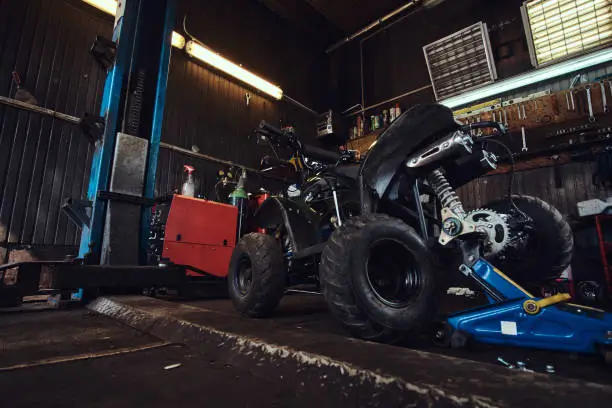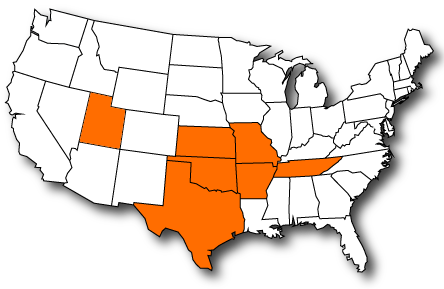All-Terrain Vehicles (ATVs) are a popular choice for outdoor enthusiasts in Arkansas. Arkansas offers an ideal environment for ATV adventures with its diverse landscapes ranging from the Ozark Mountains to the Delta plains.
However, riding an ATV comes with its risks, making ATV insurance an essential consideration for owners. This blog will delve into the specifics of what ATV insurance covers in Arkansas, providing you with a comprehensive understanding of your coverage options and the importance of having adequate insurance.

Why You Need ATV Insurance in Arkansas
ATVs are powerful machines designed for off-road use, and while they offer exciting recreational opportunities, they also pose significant risks. These include accidents, theft, damage, and liability for injuries to others. In Arkansas, while ATV insurance is not legally required for all riders, it is highly recommended for several reasons:
- Protection Against Financial Loss: Accidents can lead to substantial repair costs or even the need for a new vehicle. Insurance can cover these expenses.
- Liability Coverage: If you’re found at fault in an accident that causes injury to someone else or damages their property, liability insurance can cover the legal and medical costs.
- Theft and Vandalism: ATVs are valuable and can be targets for theft or vandalism. Insurance can protect you from financial loss in these situations.
- Peace of Mind: Knowing you have insurance can provide peace of mind while enjoying your ATV adventures.
Key Components of ATV Insurance Coverage
ATV insurance coverage in Arkansas typically includes several types of coverage. Understanding these components can help you choose the right policy for your needs.
1. Liability Coverage
Liability coverage is one of the most critical components of ATV insurance. It covers legal fees, medical expenses, and property damage if you’re found responsible for an accident. This includes:
- Bodily Injury Liability: Covers costs associated with injuries to others, including medical bills, lost wages, and legal fees.
- Property Damage Liability: This covers the cost of repairing or replacing property that you damage while operating your ATV.
2. Collision Coverage
Collision coverage pays for damage to your ATV resulting from a collision with another vehicle or object. This type of coverage is particularly useful if you ride in areas with challenging terrain or high traffic where accidents are more likely to occur.
3. Comprehensive Coverage
Comprehensive coverage protects your ATV against non-collision-related damage. This includes incidents such as theft, vandalism, fire, and natural disasters. Given the unpredictable nature of the outdoors, comprehensive coverage can be very beneficial for ATV owners.
4. Uninsured/Underinsured Motorist Coverage
Uninsured/underinsured motorist coverage protects you if you’re involved in an accident with a driver who either doesn’t have insurance or has insufficient insurance to cover the damages. This type of coverage is crucial, as it ensures you are protected even when others are not adequately insured.
5. Medical Payments Coverage
Medical payment coverage, also known as MedPay, covers medical expenses for you and your passengers in the event of an accident, regardless of who is at fault. This can include hospital bills, surgeries, X-rays, and other related medical costs.
6. Accessories Coverage
Many ATV owners invest in accessories and modifications to enhance their riding experience. Accessories coverage ensures that these additions, such as custom parts, equipment, and safety gear, are protected against damage or theft.
Factors Influencing ATV Insurance Costs in Arkansas
The cost of ATV insurance in Arkansas can vary based on several factors. Understanding these factors can help you manage your insurance expenses more effectively:
- Type and Value of the ATV: More expensive and high-performance ATVs typically cost more to insure due to the higher potential repair and replacement costs.
- Usage: How and where you use your ATV can impact your insurance rates. Regular use on rough terrains or participation in competitive events might increase your premiums.
- Rider’s Age and Experience: Younger and less experienced riders might face higher premiums due to the increased risk of accidents.
- Location: Where you store and ride your ATV can affect your insurance rates. Areas with higher theft rates or accident occurrences may lead to higher premiums.
- Deductible Amount: Choosing a higher deductible can lower your premium, but it also means you’ll pay more out-of-pocket in the event of a claim.
Tips for Choosing the Right ATV Insurance Policy
Selecting the right ATV insurance policy involves assessing your needs, comparing different options, and understanding the terms and conditions of each policy. Here are some tips to help you make an informed decision:
- Assess Your Coverage Needs: Consider factors such as how often you use your ATV, the type of terrain you ride on, and whether you transport your ATV frequently. This will help you determine the types of coverage you need.
- Compare Quotes: Obtain quotes from multiple insurance providers to compare coverage options and costs. Make sure to compare similar coverage levels to get an accurate comparison.
- Check the Insurer’s Reputation: Research the insurance company’s reputation, including customer reviews and ratings, to ensure they have a good track record of handling claims and providing customer service.
- Understand the Policy Terms: Read the policy documents carefully to understand what is covered and what is excluded. Pay attention to details such as coverage limits, deductibles, and any additional benefits or restrictions.
- Ask About Discounts: Inquire about available discounts, such as multi-vehicle discounts, safety course discounts, or discounts for storing your ATV in a secure location. These can help reduce your premium costs.
Legal Requirements and Safety Regulations in Arkansas
While ATV insurance is not mandatory in Arkansas, there are several legal requirements and safety regulations that ATV owners must follow:
- Age Restrictions: In Arkansas, riders under the age of 12 must be supervised by an adult and are restricted from riding on public roads.
- Safety Gear: All riders are required to wear a helmet and eye protection while operating an ATV.
- Registration: ATVs used on public lands must be registered with the Arkansas Department of Finance and Administration.
- Designated Riding Areas: ATVs are prohibited from operating on public highways and must be ridden in designated off-road areas.
Following these regulations not only ensures your safety but also helps in avoiding legal penalties.
Common Claims and Scenarios Covered by ATV Insurance
Understanding common claims and scenarios covered by ATV insurance can help you recognize the importance of having adequate coverage. Here are a few examples:
Accidents with Other Vehicles
Collisions with other vehicles, whether on public roads or off-road trails, can result in significant damage and injuries. Liability coverage and collision coverage are essential in these situations.
Rollovers
ATVs are prone to rollovers due to their high center of gravity. Rollovers can cause extensive damage to the vehicle and injuries to the rider. Comprehensive and medical payment coverage can help cover the costs associated with such accidents.
Theft
ATVs are valuable and often targeted by thieves. Comprehensive coverage protects you from financial loss if your ATV is stolen.
Vandalism
Damage caused by vandalism, such as broken parts or spray-painted surfaces, can be costly to repair. Comprehensive coverage ensures these damages are covered.
Natural Disasters
Arkansas is susceptible to various natural disasters, including floods, tornadoes, and storms. Comprehensive coverage protects your ATV from damage caused by such events.
Enhancing Your ATV Safety
While insurance provides financial protection, practicing safe riding habits is crucial to minimize risks. Here are some safety tips for ATV riders:
- Wear Proper Gear: Always wear a helmet, eye protection, gloves, and appropriate clothing to protect yourself in case of an accident.
- Take a Safety Course: Enroll in an ATV safety course to learn proper riding techniques and safety practices.
- Inspect Your ATV: Regularly inspect your ATV for any mechanical issues or damage before each ride.
- Ride Sober: Never operate an ATV under the influence of alcohol or drugs.
- Know Your Limits: Ride within your skill level and avoid challenging terrains that you are not comfortable with.
Conclusion
ATV insurance in Arkansas is a crucial consideration for any ATV owner. It offers protection against financial losses, and legal liabilities, and ensures peace of mind while enjoying your ATV adventures. By understanding the different types of coverage available, factors influencing insurance costs, and tips for choosing the right policy, you can make informed decisions that best suit your needs.
Additionally, adhering to safety regulations and practicing safe riding habits will further enhance your protection and enjoyment while riding your ATV in the beautiful landscapes of Arkansas.
Find out exactly what ATV insurance covers in Arkansas. Protect your ride today—get a free quote now!


